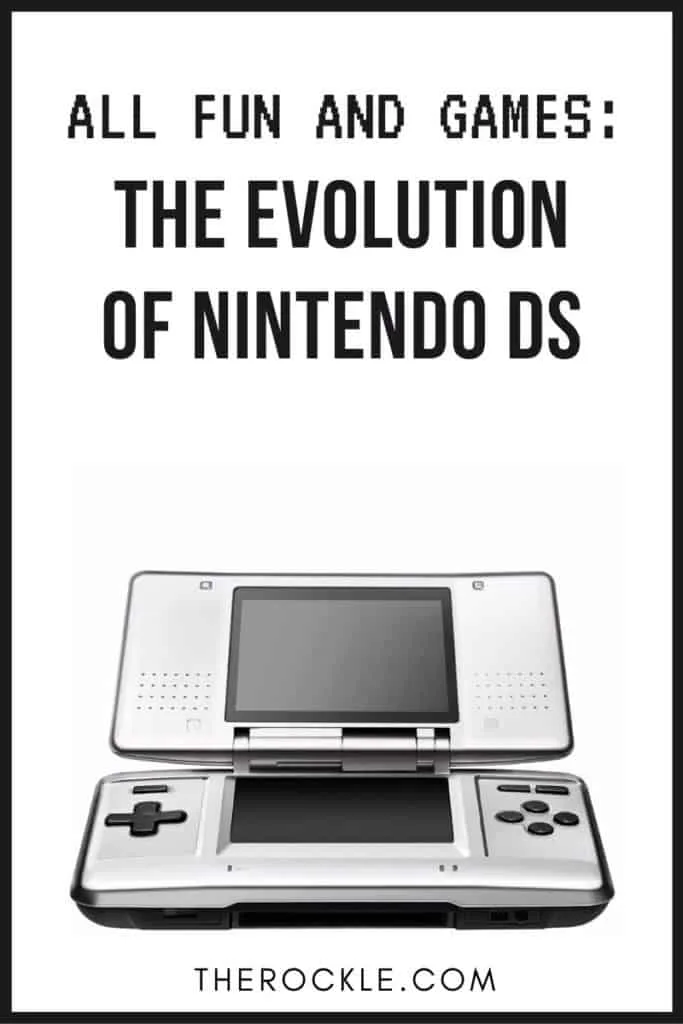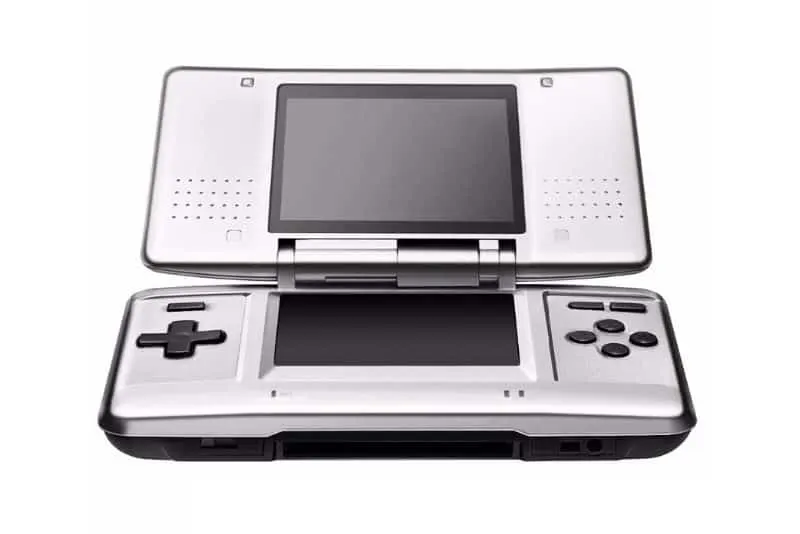The Nintendo DS is, without a doubt, the most popular video game console. It started Nintendo’s tradition of providing gimmicks for their consoles and exploded the casual game market.
However, as most of us are aware, it has undergone numerous revisions. Even its successor, the Nintendo 3DS, has received enough updates to compete with Street Fighter 2.
In this article, I’ll go over how the DS line evolved over time, weighing the benefits and drawbacks of each modification.
But first, let’s look at what led to the creation of the Nintendo DS.
THE EVOLUTION OF NINTENDO DS
DS BEFORE THE DS
Like everything else good in the world, the DS was influenced by a wide range of factors.
The most obvious is, of course, the GameBoy Advance SP. I mean, it’s backwards compatible with the Nintendo DS, so it’s got to be the most influential, right?
However, if we go far enough back in Nintendo’s history, we might find something very similar to the DS. And by “go back,” I mean “all the way back” to June 1982.
That summer, Nintendo released the Donkey Kong Game & Watch. Looking at a picture of it, we can see two major similarities to the Nintendo DS.
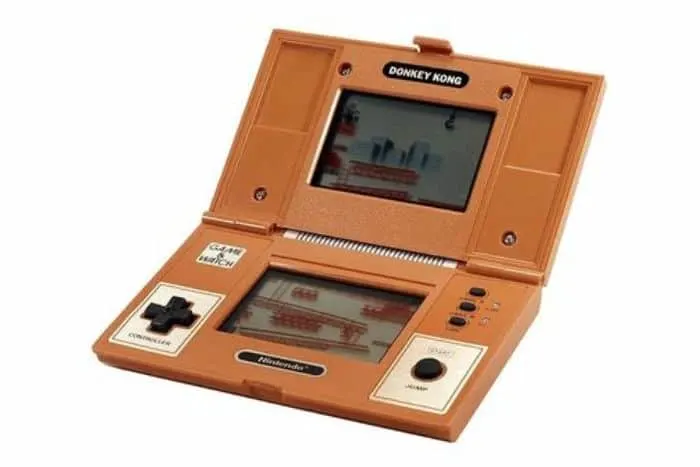
The most apparent feature they share is the dual-screen, but they also have one more subtle commonality.
The Donkey Kong Game & Watch was the first console to feature the now-ubiquitous D-Pad. It is no longer a good idea to play this because it can only play one game (and there are many better ways to play that game now.)
Furthermore, because of the console’s age, its price makes it even less valuable because only collectors buy it.
So, I give this a “don’t buy it/10”.
THE ORIGINAL DUO
Because the first two DS’s features are so similar, I’m going to group them together.
They both have the bottom touch screen, two cartridge slots, and the X,Y,L, and R buttons, with the latter two located on the console’s back.
The top cartridge slot accommodated DS games, while the bottom one supported GBA games. However, this is where the distinctions between the two become apparent.
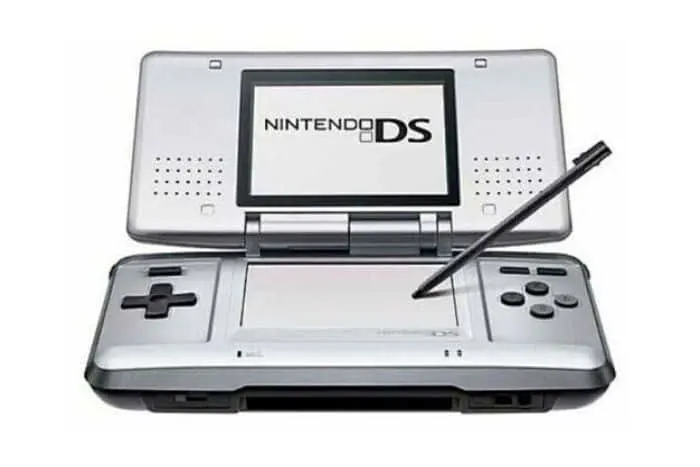
Although the original Nintendo DS is a classic, it is objectively quite bad.
The top screen was notorious for falling off, but at least it could still be used to play GameBoy Advance games.
And the Stylus was placed on the back of the console, making it inconvenient to use while playing. In addition, the overall shape was weird.
The DS lite improved on all of these points while also being $30 cheaper when it was released.
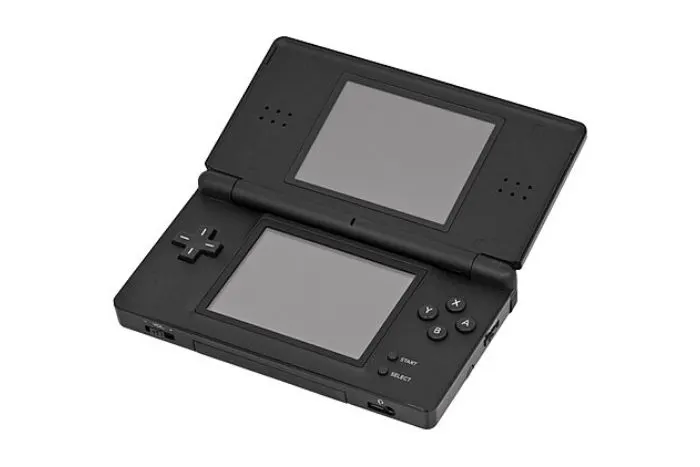
It looks absolutely stunning. And it’s not just more visually appealing, but it’s also more durable and comfortable.
This is the console that everyone should own. The top screen is less prone to falling, the stylus is comfortably on the side, and it has a nice well-rounded shape. It is reasonably priced, portable, and has a diverse library.
If you’re on a tight budget and want one of these, this is the one to get.
I give the original DS an “if that’s your thing/10;” and the DS lite a “If you have 40$ buy it/10.”
THE DSi
The DSi is the first significant revision in the DS line.
It has a front and back camera and a few quality-of-life improvements such as slightly larger screens.
However, the second slot has been removed, so you won’t be able to play GBA games on it.
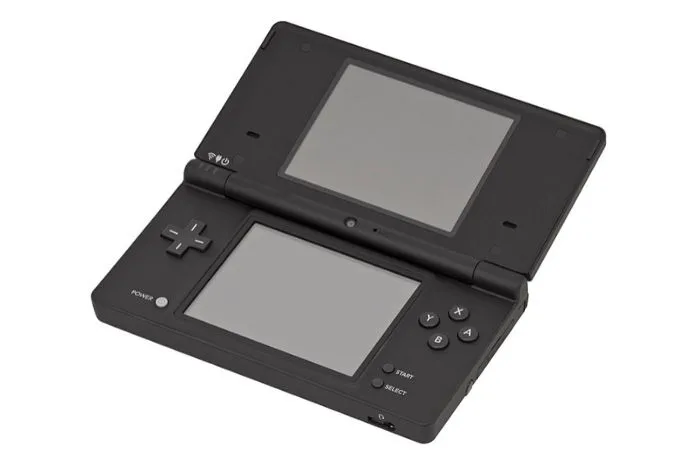
The most noticeable difference, however, has to be the new DSiWare. DSiWare are digitally downloadable programs.
Unfortunately, that service, along with the Wii and DS online services, was discontinued in March of 2017, which means that the DS Lite’s main selling point is no longer available.
On the other hand, the DSi received its own revision known as the DSi XL during its lifespan. It’s just larger and has a more powerful battery.
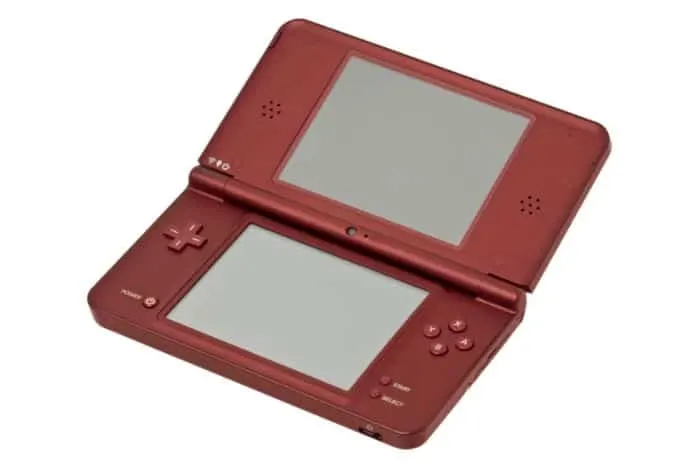
I give the original DSi a “If you have a hatred for GBA games I guess it’s ok/10;” and the DSi XL a “if you need a longer-lasting battery/10.”
ORIGINAL 3DS’
Only two years after the launch of the DSi, the Nintendo 3DS was released in April of 2011.
This was the legacy of the DS.
The GameBoy Advance to the GameBoy; the PS2 to the PS; the Xbox 360 to the XBOX.
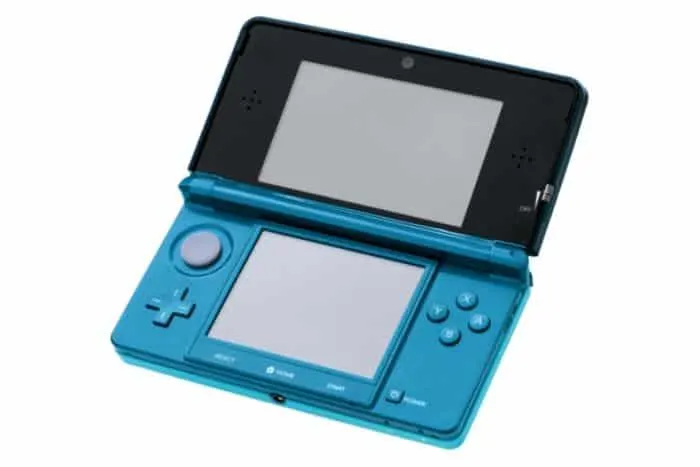
There were far too many differences to list here, so I’ll just highlight the most significant ones.
The first and most obvious difference is the larger size and circle-pad. It also included a full menu and improved the DSi Shop – the Nintendo eShop, which is the current multiplatform store for Nintendo consoles.
However, given the smaller exclusive library and the $250 launch price, the Nintendo 3DS is regarded as far inferior to the DS. It also had region lock on its games, which meant that imports were out of the question.
But, if you can find one for a low price, this is essentially just a better DSi.
Although it lacks GBA compatibility, many of the games are available on the eShop, which is a trade-off for the ability to play 3DS games and everything else on the eShop.
Its main gimmick, no-glasses 3D, isn’t very good nor useful, and it hurts your eyes. And this one also had a more considerable revision, the Nintendo 3DS XL.
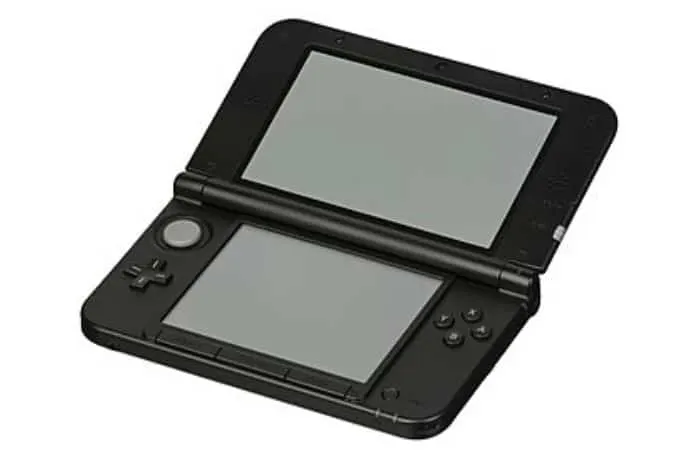
It’s merely bigger. It also had some subjective quality-of-life improvements, such as a non-clamshell design, but it is simply larger.
I give these both a “if you find a cheap one/10.”
THE 3DS SUCCESSORS
From here, the 3DS splits into two categories: the 2DS line, which is a budget console without 3D, and the New 3DS, which is a line of 3DS with improved performance and new features.
The Nintendo 2DS is the first of these to be released.
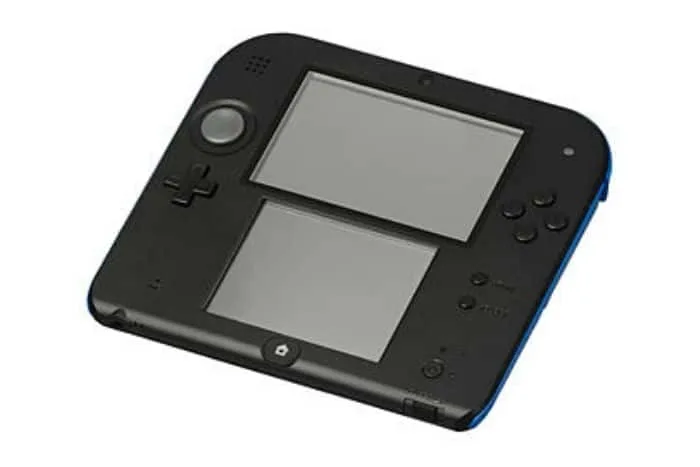
It did away with the 3D functionality and the closing design, sacrificing these features for half the price.
It isn’t particularly distinctive and is now roughly the same price on reselling websites.
It gets a “if you like the shape/10.”
The 2DS line would not be revived again until 2017.
The New Nintendo 3DS was the next 3DS console to be released.
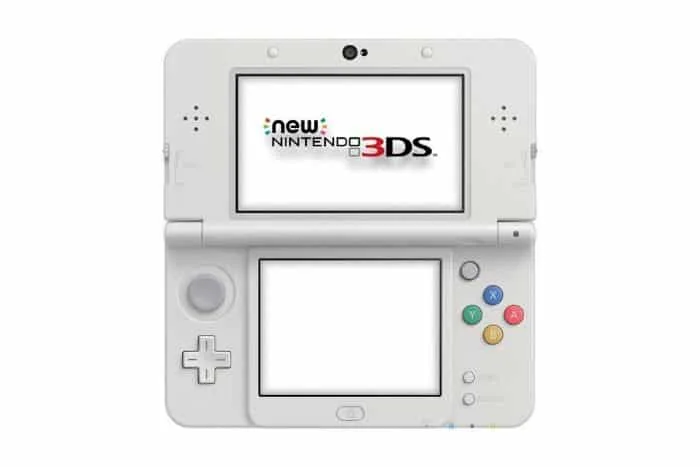
It primarily improved performance and came with a “second circle-pad.”
That little unlabeled button is, in fact, a second circle-pad. It works, but it’s not what people had in mind when they asked for a second circle-pad.
But, it did its job and added Amiibo functionality. It also included two extra buttons, L2 and R2.
I give the New 3DS a “if you wanna play the exclusives/10.”
Only a year later, it was updated again, this time dubbed the New 3DS XL, prompting a slew of naming memes.
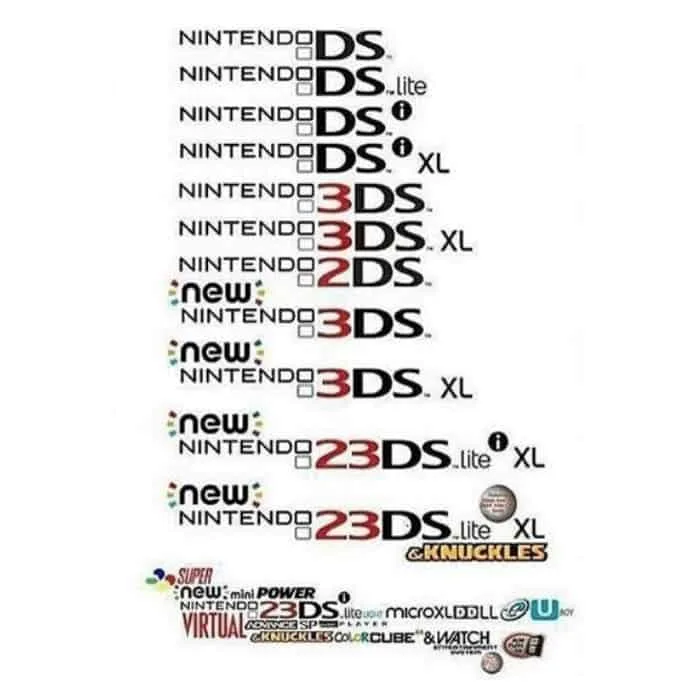
However, the console itself was not as unique as the name suggests.
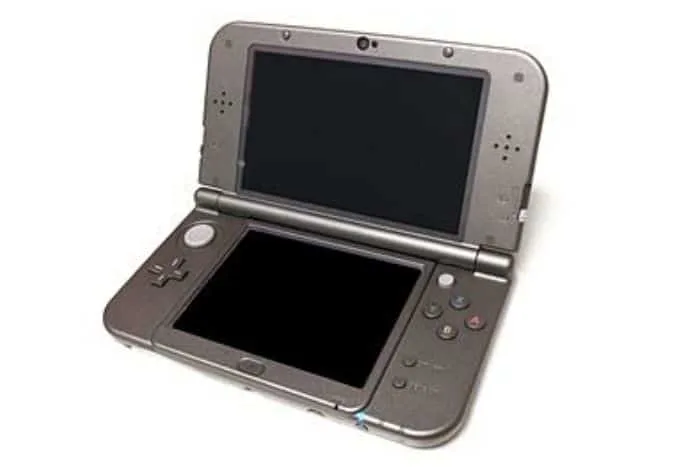
It didn’t make any changes to the design and simply grew in size once more.
It gets a “Idk man, it’s just kinda basic/10.”
However, in July of 2017, we received the New 2DS XL, which is also the final console in the 3DS line.
The 3DS line died the way it lived: uninterestingly.
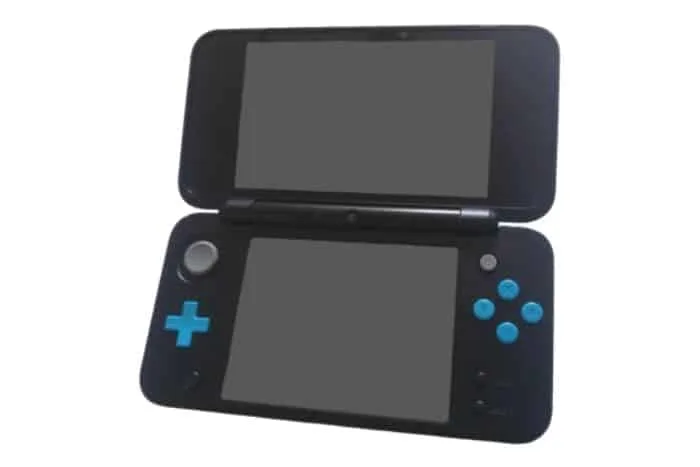
Despite its simple design, it is far more usable than the original 2DS.
It also added a second circle pad and new 3DS line performance, meaning that it supports the New 3DS line exclusives. It’s supposed to add a non-budget version of a budget console.
So I give this one a “worthless unless you like the phone for the top screen/10.”
CONCLUSION
So, in the end, I believe we can all agree that the DS/3DS line became less necessary as time passed.
It has a total of nine inclusions, not counting the Game & Watch, when it really only needed three.
I’d recommend these if you’re looking to buy one:
- The DS Lite – if you are on a budget, since it can play both DS games and GBA games.
- The 2DS – if you only want to play a few 3DS games.
- The New 3DS – it plays all the 3DS/New 3DS games and costs less than the XL version.
Of course, your purchasing decisions are entirely your own.
Go ahead and purchase the New 3DS XL. If you want to buy a DSi, I’m not sure why, but go ahead.
But, no matter what poor buying choices you make today, remember to have a nice day. Arrividerci!
